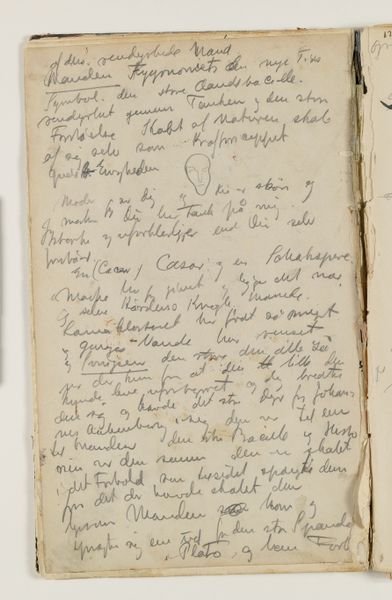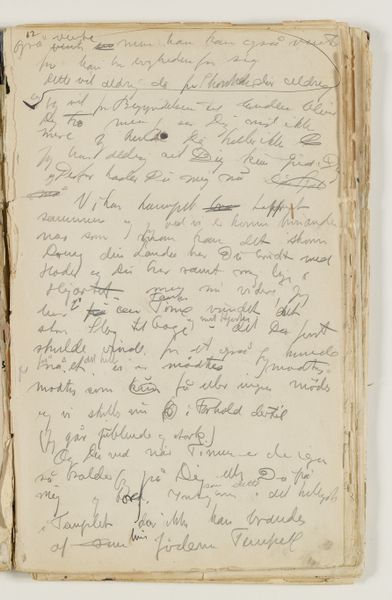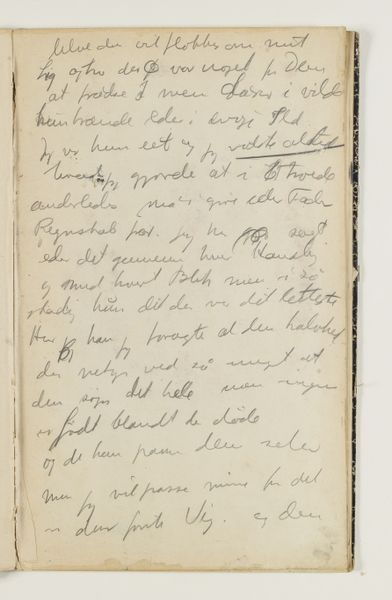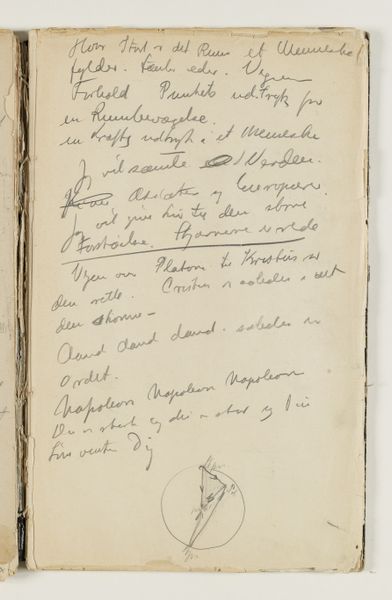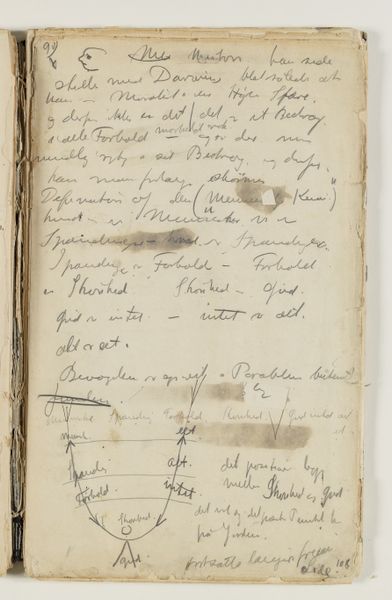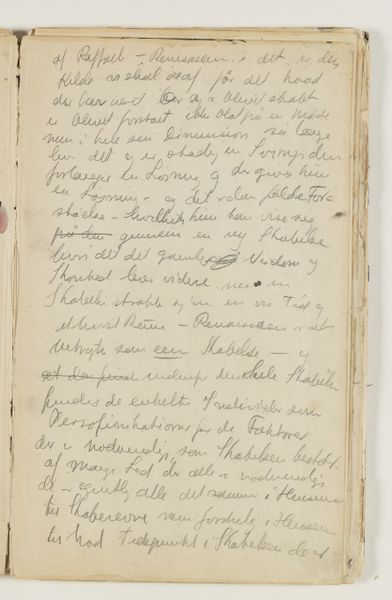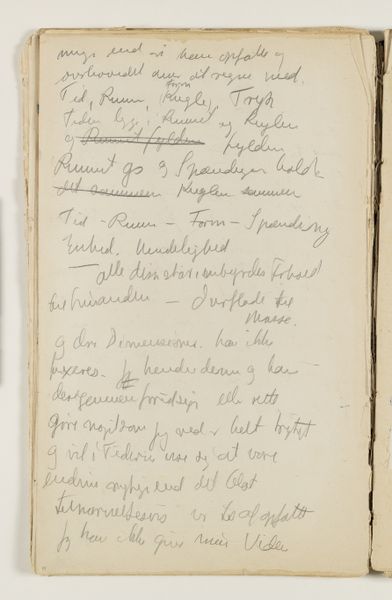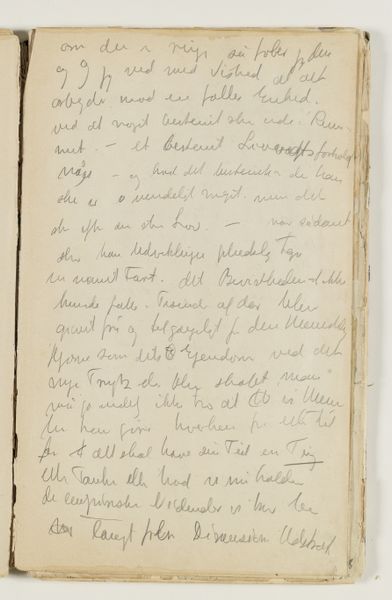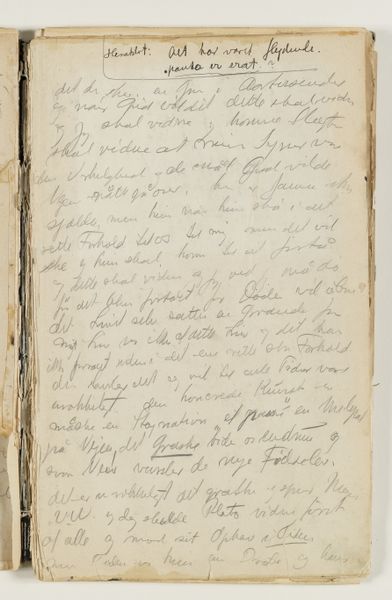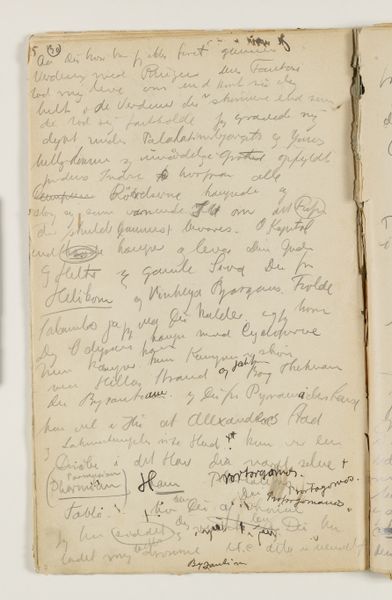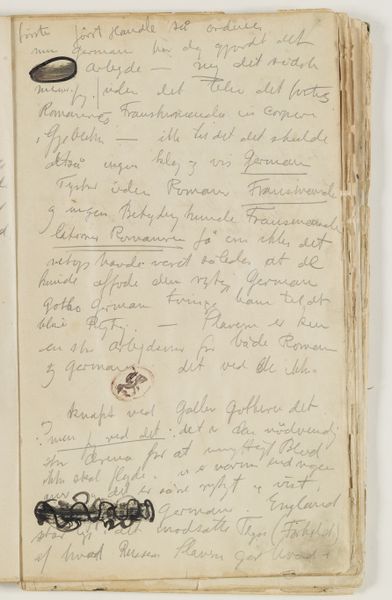
Om parablen og kuglen som formelle elementer hos Raphael og Michelangelo. F.n. et diagram med samme figurer 1913 - 1914
0:00
0:00
drawing, paper, ink, pencil
#
drawing
#
paper
#
ink
#
geometric
#
pencil
#
academic-art
Dimensions: 337 mm (height) x 207 mm (width) (bladmaal)
Editor: This curious page, titled "On the Parabola and the Sphere as Formal Elements in Raphael and Michelangelo. A Diagram of the Same Figures" from 1913-1914 by J.A. Jerichau, seems like an academic's notebook, filled with ink and pencil on paper, and I'm immediately struck by the artist's comparison of geometric shapes and how these elements relate to renowned artists. How do you interpret this work and its cultural context? Curator: Ah, this isn't just a page from a notebook; it’s a portal to Jerichau’s mind, where art history, geometry, and perhaps a touch of existential pondering collide! He’s not merely sketching; he's dissecting the essence of Raphael and Michelangelo's styles down to their basic forms: the sphere and the parabola. See how the handwritten notes add a stream-of-consciousness quality, like we're reading his thoughts? It feels almost like he is deconstructing centuries of artistic tradition! Editor: I notice he actually writes out ‘Raphael equals circle’. It almost feels as if Jerichau wants to present it more objectively. What are your thoughts? Curator: That's where it gets fascinating! The geometric figures aim for an objective observation of style, but look closer – there’s a sense of Jerichau imbuing it all with something far more subjective, more mystical almost. Are these artists really definable by shape alone, and do you find yourself agreeing? Editor: No, but it really reveals the similarities that are always present if you examine the fundamentals closely! I would never have thought that those two Renaissance titans shared geometry! Curator: Precisely! And that tension – the rational versus the intuitive, the sphere versus the sweeping curve – that’s where Jerichau’s diagram becomes more than just an art history lesson. It’s a personal exploration of how we, perhaps even Jerichau himself, see and understand beauty. I would love to read his finished thoughts and interpretations… What a fascinating insight!
Comments
No comments
Be the first to comment and join the conversation on the ultimate creative platform.
